Teabox, a two-year-old e-commerce start-up is opening up the $30 billion tea industry with its innovations in technology and supply chains. They’ve delivered 30 million cups of tea to tea lovers across 90 countries including Micronesia, Chile, Argentina and even Iraq. We chart the trail
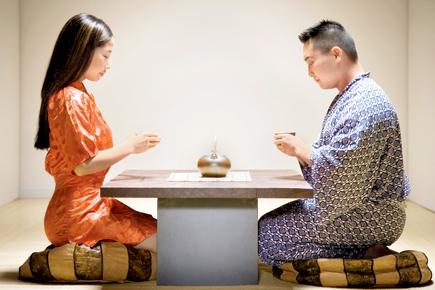
![]() With Mark Zuckerberg having the tri-colour on his display picture on a social networking site after PM Narendra Modi’s recent visit to the Silicon Valley, much has been said about how we are going digital and global. In similar light, Teabox, an e-commerce start-up is taking desi tea to a wider global consumer. Rated as one of the hottest start-ups in the food and tech category and Internet Retailer of the Year — Food & Drinks (2015) by World Retail Congress 2015, it has already delivered 30 million cups of tea, in two years to over 90 countries including regions such as Federated States of Micronesia, Chile, Argentina, Fiji and Ural Mountains (Siberia).
With Mark Zuckerberg having the tri-colour on his display picture on a social networking site after PM Narendra Modi’s recent visit to the Silicon Valley, much has been said about how we are going digital and global. In similar light, Teabox, an e-commerce start-up is taking desi tea to a wider global consumer. Rated as one of the hottest start-ups in the food and tech category and Internet Retailer of the Year — Food & Drinks (2015) by World Retail Congress 2015, it has already delivered 30 million cups of tea, in two years to over 90 countries including regions such as Federated States of Micronesia, Chile, Argentina, Fiji and Ural Mountains (Siberia).
ADVERTISEMENT
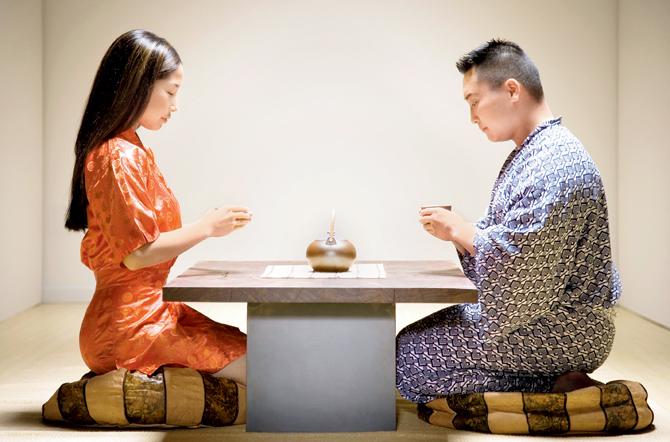
Tea off
“The tea industry is one of the oldest industries and Teabox is trying to give this industry a Silicon Valley Makeover,” says Kaushal Dugar, CEO, Teabox. Giving us the back-story, he reveals, “I was born in Siliguri, a town in the Darjeeling district. If you’re living in Siliguri, it’s likely that you are doing something with tea as it’s the biggest industry there. My father’s business was related to tea garden supplies and equipment. As a young kid, I would accompany him on his visits during school holidays. I loved it. The huge machines in the estate factories fascinated me. I thought it was magical — the process where a small young green leaf turns into a delicious drink,” he recalls.
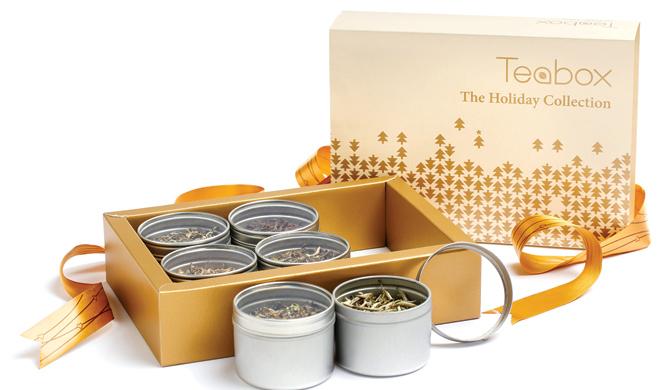
Handpicked teas from Teabox Kaushal Dugar, CEO, Teabox testing the tea.
What’s different?
“At Teabox, we visit the tea gardens, taste and select the teas we want to sell. The teas are vacuum packed to retain freshness. We source our teas from some of the best tea gardens in Darjeeling, Assam, the Nilgiri, Kangra, Sikkim and even Nepal. We want our customers to know where we are sourcing the teas from, the date of plucking, tasting notes, garden details, etc. Traditionally, tea moves from a garden to an auction house. Various distributors sample the teas and an auction date is set typically a month after the production. In this interim of a month the tea is stored in poorly conditioned warehouses. Post auction, the exporter ships the tea to his big importer connections through the ships,” he informs.
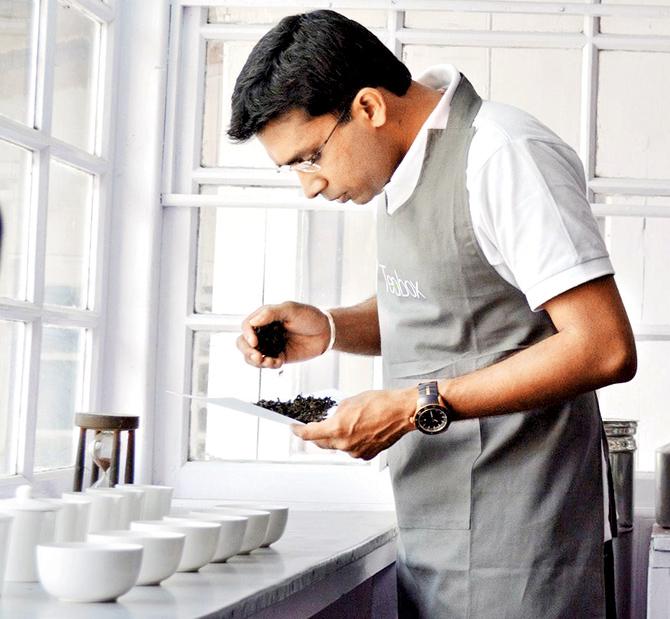
He adds, “The tea reaches the importer in about 1-2 months depending on the distance and custom clearance. At this point, it is three months from the production of that fresh tea back. Post this the importer sells it to wholesalers who in turn might sell it to retailers who would eventually sell it to the end consumer. This process takes another one-two months. Overall, it takes three-six months for the teas to actually reach the end consumer. We are making the search for premium teas easy, accessible and a very pleasant one,” reveals Dugar.
New age
Recently, the company launched the world’s first ‘Personalised Tea Subscription Service’. This first-of-its-kind program is powered by Teabox’s patent-pending machine-learning technology that personalises and matches every individual’s tastes to a selection of teas. The Teabox subscription programme empowers tea drinkers to choose the kinds of tea they would enjoy. This is done by breaking down tea into 75 different attributes such as aroma, astringency, strength, body, etc., into objective components, which are matched to user preferences, habits and taste characteristics.

A tea picker at a tea plantation in darjeeling
How it works
“Tea estates send over their tea samples, which are then evaluated by our expert tea tasting team. We have also invested in setting up a rigorous, quality-checking environment, which ensures that only the best quality leaves are selected and stored in temperature and humidity controlled facilities. The orders, which ship within 24 hours of order, are packaged in opaque, vacuum packaging protecting them from sunlight and the environment outside during the transit. Regardless of the location around the world, buyers receive their tea packs within just 3-5 business days,” Dugar explains.
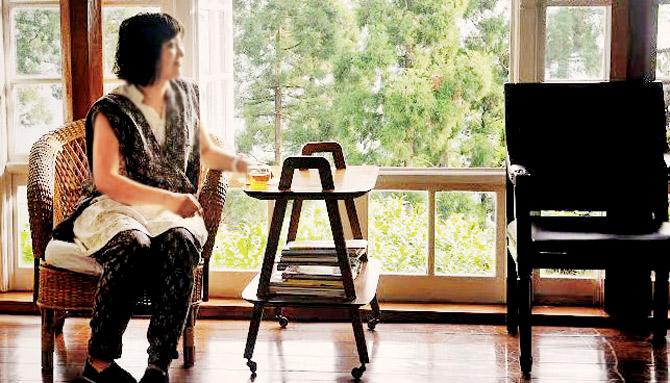
A Teabox customer in Seoul with her daily cuppa. Pics courtesy/ teabox.com
Around the World
Teabox’s primary target markets are the English speaking developed markets (US, UK, Canada & Australia) and CIS region (ex-USSR Countries). They intend to expand into China, Japan and South Korea this quarter. The list of countries they have already shipped to include those that ordinarily do not figure in the list of tea-importing countries, such as, the Micronesian islands, Chile, Argentina and even Iraq. “All the traditionally large tea companies have continued to operate within the constraints of the legacy value chain. Most of the new tea brands too seem to be just putting a new spin on the last mile delivery,” he adds.
Match this
Talking about competition and challenges Dugar confesses, “You can call the high-end tea salons our competition. We live and thrive in a segment that is rich in opportunity, but it is also very competitive. It becomes essential for us to keep innovating to offer genuine benefits to our consumers. Most people told us that tea couldn’t be sold online. It is a product that people touch, feel, and smell before buying. Changing this mind set was one of the biggest challenges we faced. We believed that while coffee and wine can be sold online, there is enough scope for tea to be sold too.”
What’s your favourite Chai?
Darjeeling spring flush and summer flush are most in demand, while the teas from Assam and Nilgiri also seem to be catching up soon. The R&D team at Teabox consists of food technologists and blenders. Currently the website lists over fifty blends created in-house. Customers in the US prefer Darjeeling Teas, whereas in Russia, they prefer the Assam or Second Flush Darjeeling teas. Countries like Fiji prefer Oolong and Green, Iraqis opt for White and Black teas, Slovenia prefers Black teas. Darjeeling Oolongs are preferred in all countries.
 Subscribe today by clicking the link and stay updated with the latest news!" Click here!
Subscribe today by clicking the link and stay updated with the latest news!" Click here!







